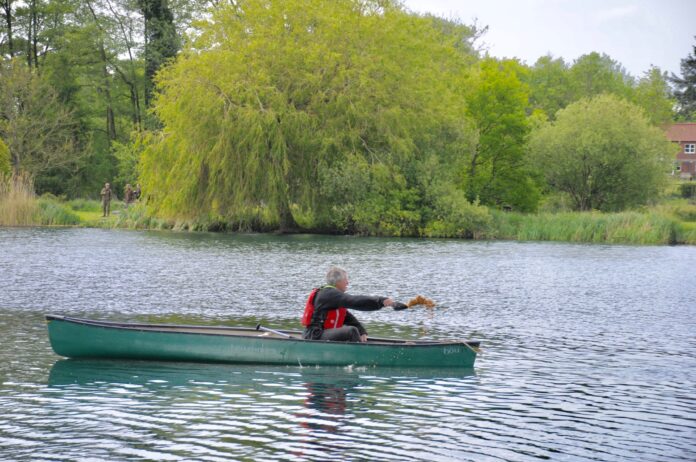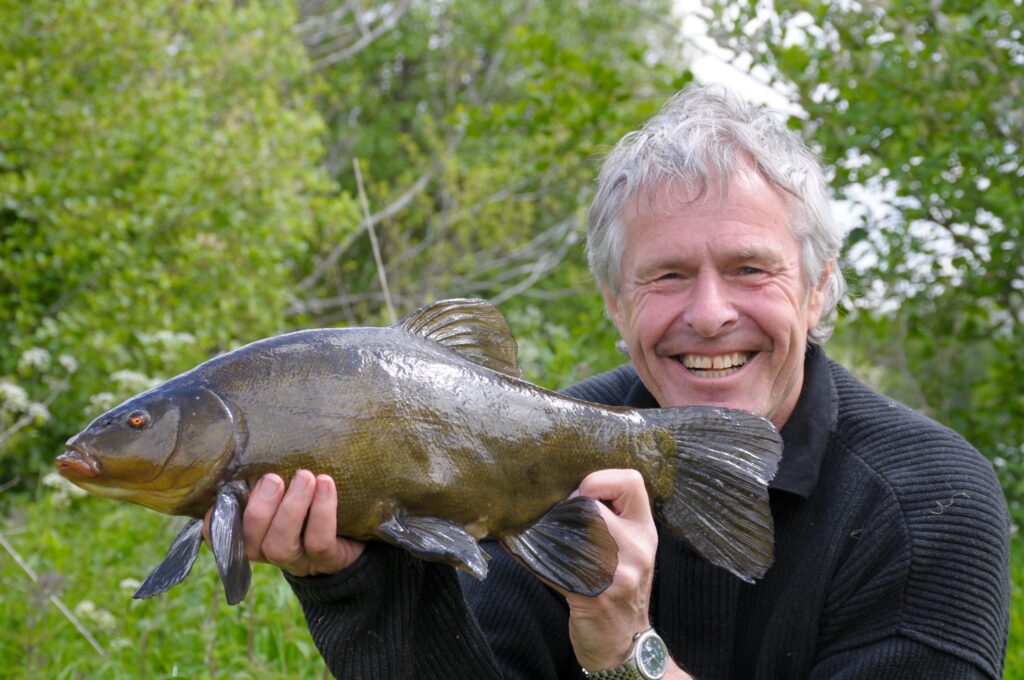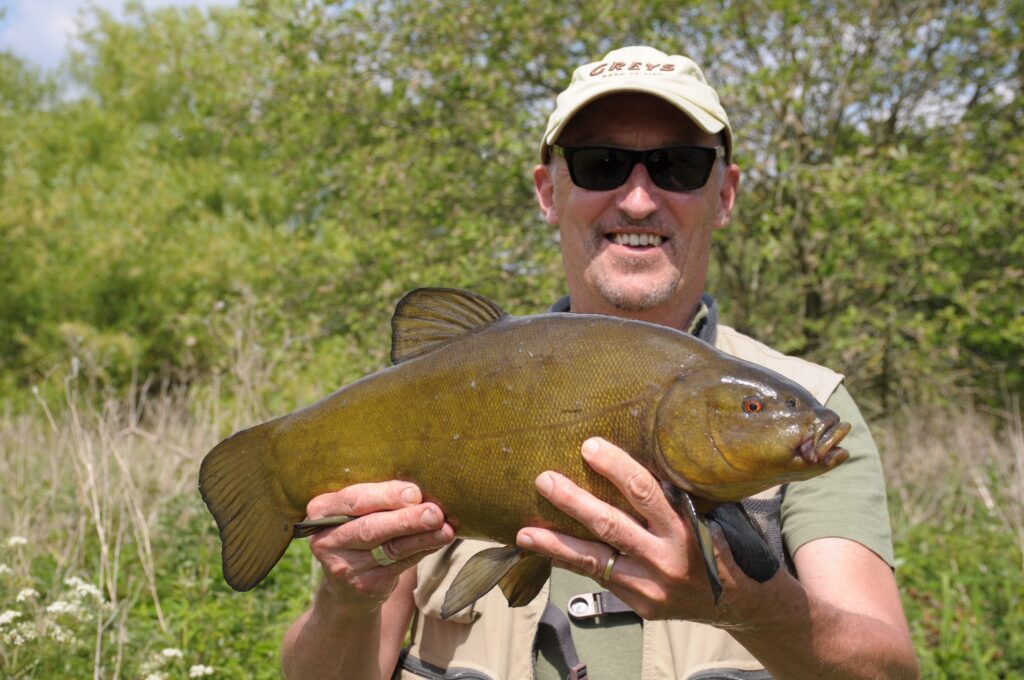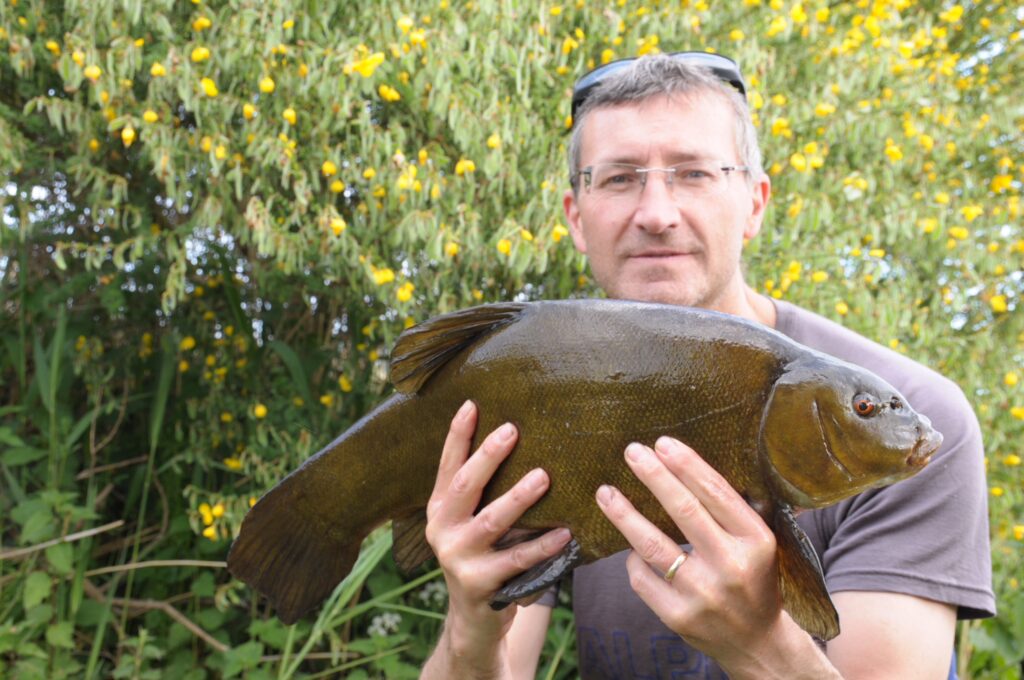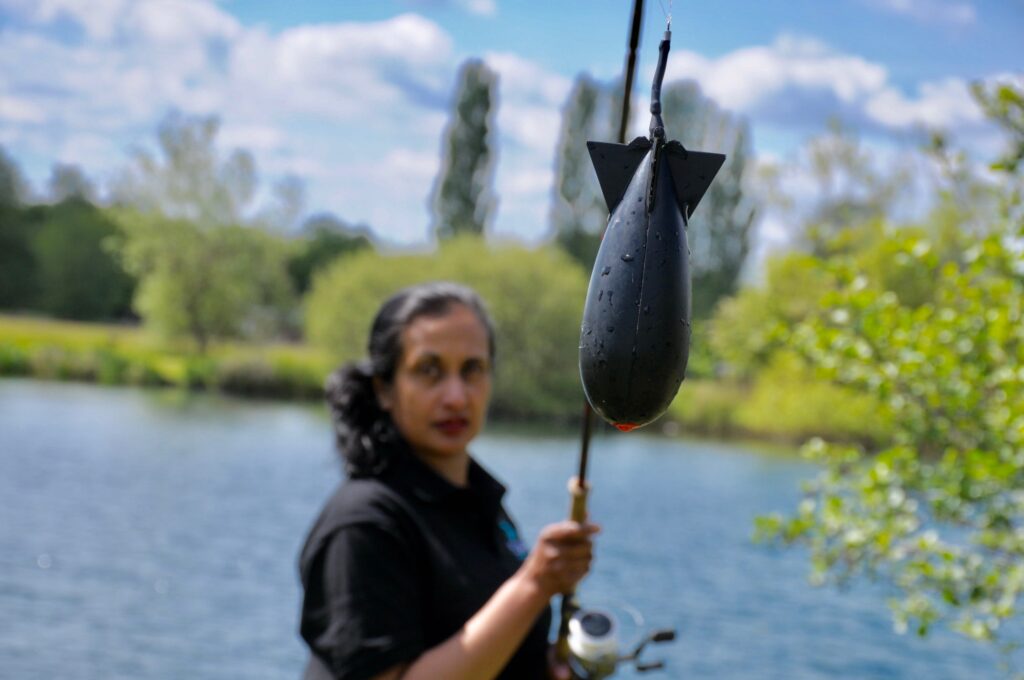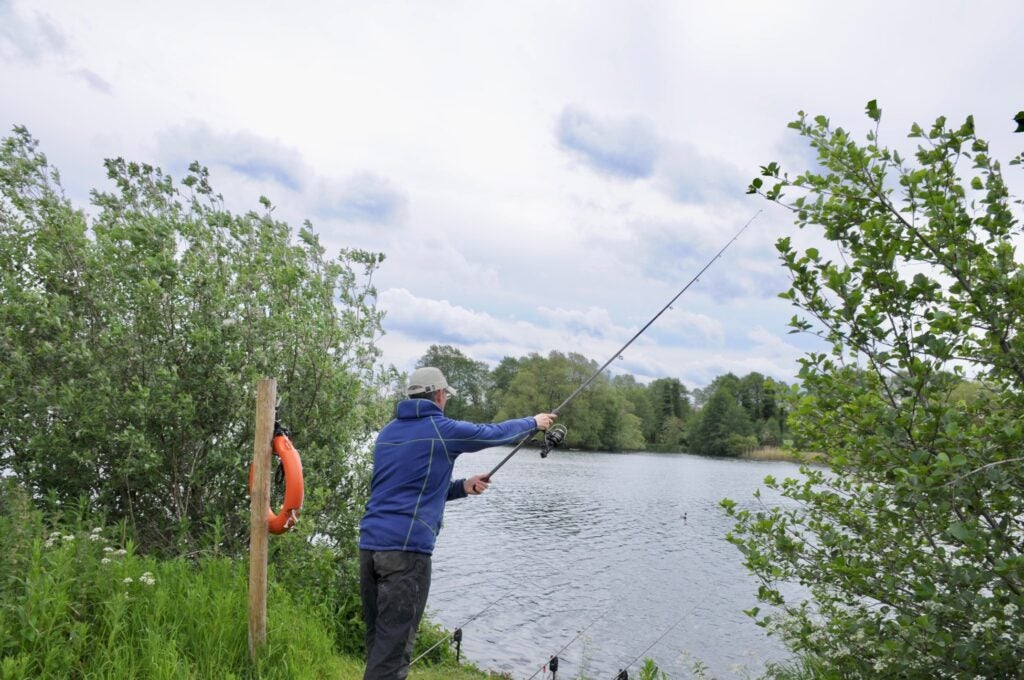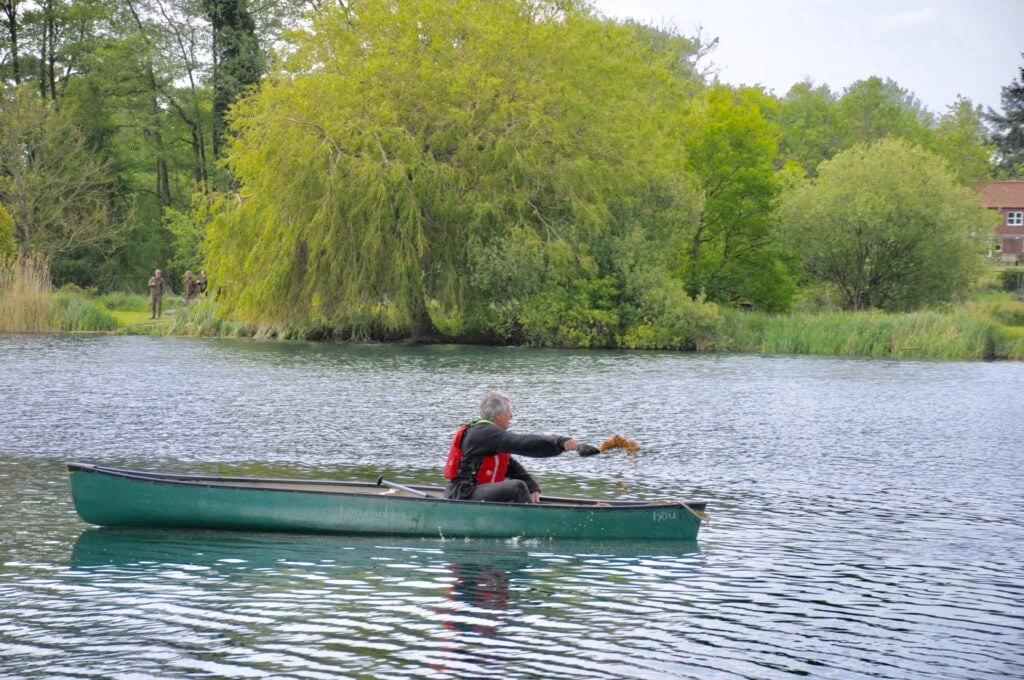#3 BAITING REGIME CONSIDERATIONS
It’s vital to realise that tench groups are highly nomadic within a fairly large territory, depending on the size of the venue of course. If you are going to catch them, you have to stop them in their wanderings, concentrate them together, entice them down to the bed, and then convince them to feed on what you are offering.
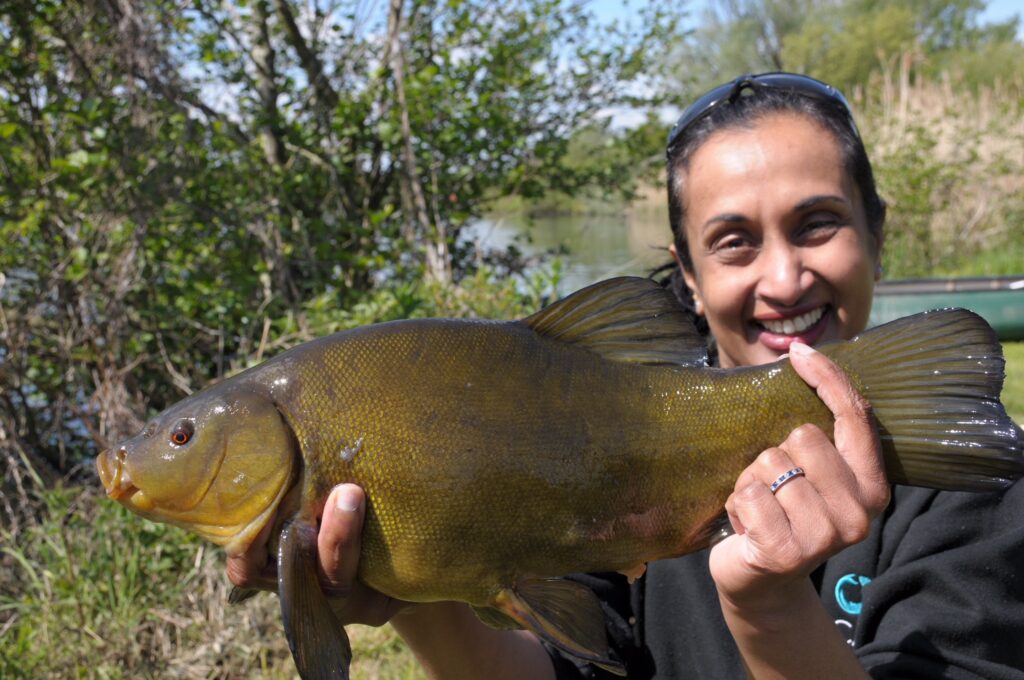

Prebaiting! Let’s make no bones about this, and admit that whether we like it or not, prebaiting is hugely effective and revolutionises catches. It is a tactic you cannot use on busy waters, or if you live a long way from the venue. It is also not allowed on some waters because of rules and, indeed, prebaiting offends some people’s sensibilities, which I can understand. Yet, prebaiting is a perfect example of how you can bend wild fish to your will. If it is done well, prebaiting can over days attract more and more groups of tench into your swim until they coalesce into one huge shoal. On private waters you can prebait, but you can also often find room on carp syndicate waters if you work with the carpers and agree to keep out of their swims, in return for a patch of your own. The swim doesn’t even have to be a top one, because prebaiting will drag tench to where you want them, rather than where their own inclinations might take them.
If you do not choose to go the full-blown prebaiting route, there is a halfway house. If you can get to the water the night before your session, and pile bait into a swim you can guarantee for yourself next day, this is far better than nothing. The worst scenario is to arrive cold on the day and fish a swim that has seen no bait at all. Really good watercraft can get you onto a peg where there are tench, and perhaps feeding tench, and you might get a fish or two. But remember, if this is how you do it, in April and May it is hard to overfeed a tench swim unless the water has very few in it, or unless it is very cold, possibly with winds from the East or North East. It is no use thinking half a tin of corn will produce a bag of tench for you, because two six pounders will eat that in ten minutes and move on. If it is relatively mild with a mellow Westerly or Southerly, then tench will be feeding hard, coming alive, making up for the winter, preparing for spawning in the months to come.
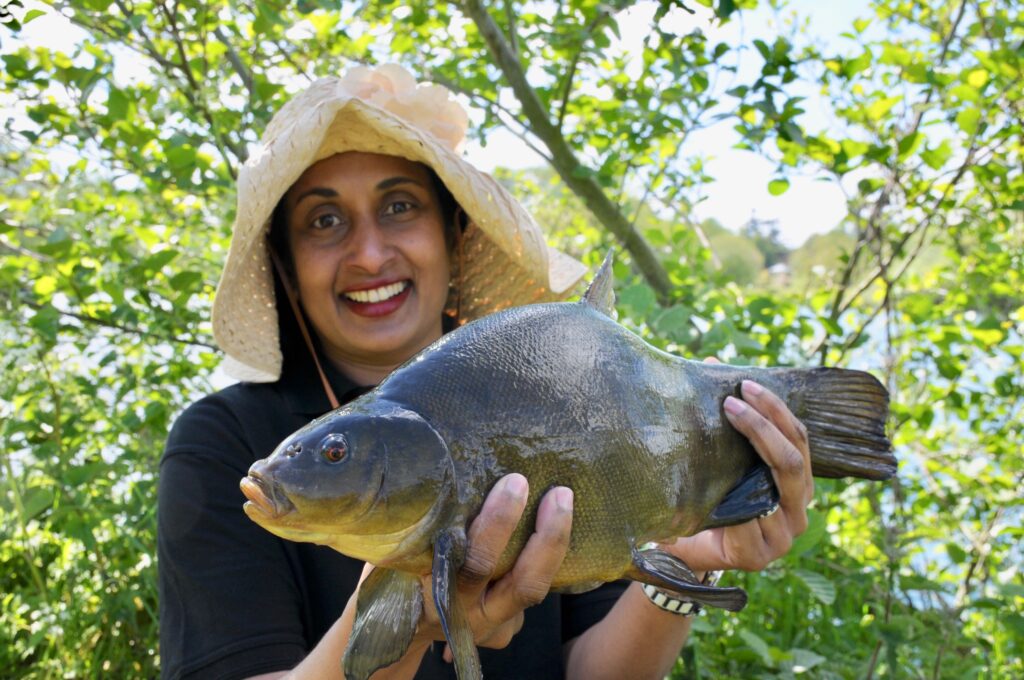

Let’s look at some important considerations as I see them. I like a good base mix, whether I am prebaiting or just feeding on the day. My go-to is Vitalin and I buy this in 15 kilo sacks. This is pedigree dog food, full of goodness, and full of tench-attracting bits and bobs that keep them interested for hours. Wetted, the Vitalin doubles in weight but even so, there are times in May, if I am out every day, I can go through six or seven sacks a week. This is where cost comes in. Vitalin, bought judiciously, can work out at about a pound per kilo dry, which is much cheaper than anything you can find in a tackle shop. Into the wetted Vitalin (I like it not too runny and not too stodgy), I add hemp, corn, parboiled rice, or even corn merchant bought Pigeon Mix – all of which provide small, attractive titbits to keep tench digging in the area for hours.
This is the cake, if you like, let’s look at the cherries. Also add the juicy morsels that you are going to use on the hook to stop the fish becoming overly preoccupied with small food items alone. I’m thinking the obvious here. Maggots. Boilies. Pellets. Even chopped worms. How you deliver the bait depends on how far out you want to fish, obviously! If you are float fishing the margins you can deliver it by hand, but my life was changed when I began to use a plastic scoop. A scoop makes it cleaner for you but also it is more accurate, when you need that. You can fire balls much further by catapult, but you might need to stiffen the Vitalin base with standard ground bait so the balls do not break up mid-air. I prefer a Spomb. Okay, you will need a stronger extra rod to get this out, but you can whop up to 12 ounces of bait 70 yards plus when you need to. It is hard work, but once you are experienced, you get into a rhythm that really empties those buckets of bait!
Or, sometimes, depending on rules and availability, you can use a boat. But be careful. Life jackets please. Do not go out in a wind, wearing chest waders, and a ton of water-absorbing clothing. Also, you will need a mate on the bank (or a marker float) to direct you because it is strangely disorienting when you are out there, and you can heave the bait into entirely the wrong place! My advice is not to bait too tightly, but spread it around the swim a bit. You want passing fish to see the bait easily and give them something to home in on. Also, it is good to have the tench spaced around a largish swim when you can, simply because of the disruption factor when a fish is hooked. You’ll find there are hotspots within this larger area where you almost know a bite will occur – if you have baited well.
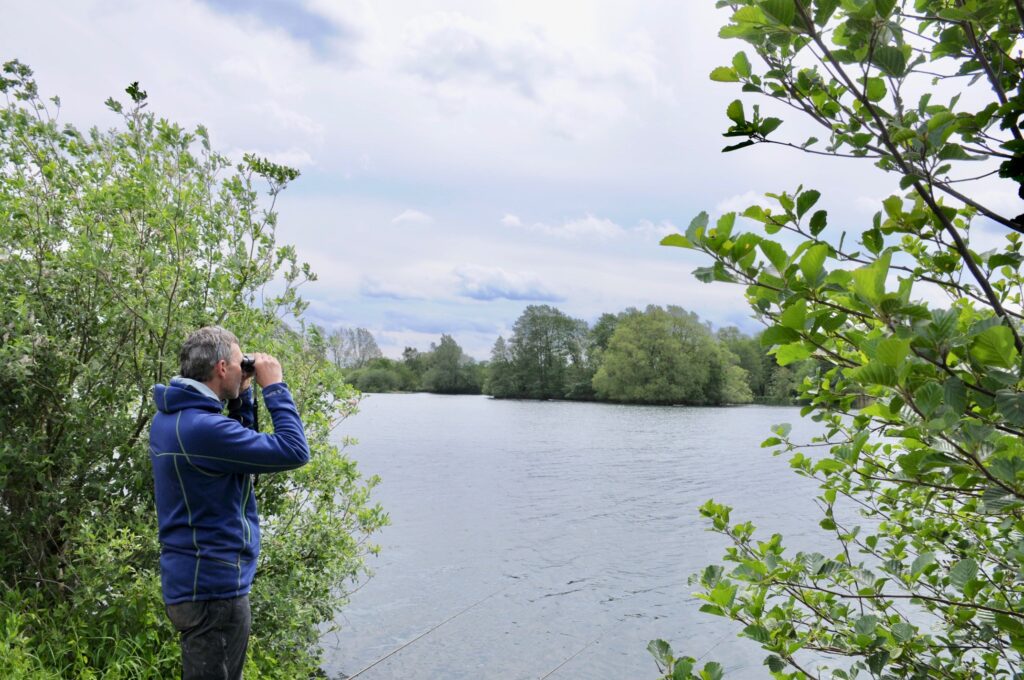

is taking place. It’s not always about rolling and splashing, a lot of movement
is subtle and just the sightings of backs or fin tips
I have already said that half a tin of corn is no use at all in 95% of situations. If I am prebaiting the night before, I’d perhaps put in 8 to 15 pounds of bait, depending on size of water, size and numbers of fish, and weather conditions. On arrival, I might fish for half an hour without baiting, just to see if tench are there already. If I know I have a lot of tench in a big swim on a big water I might well top up with five to ten pounds of bait every 45 minutes or so. If the fish are coming and if you are seeing a lot of fish topping, keep the food going in or they will drift off looking for food elsewhere. Keep working. Keep watching. Keep thinking about how to develop the session as it unfolds. Remember that on big pits especially the prime feeding time can be between 8.30am and 2.00pm, so do not slack off your feeding at 11.00am, thinking the fun is over. Furthermore, in my experience, the biggest fish of the day often come towards the end of the session.
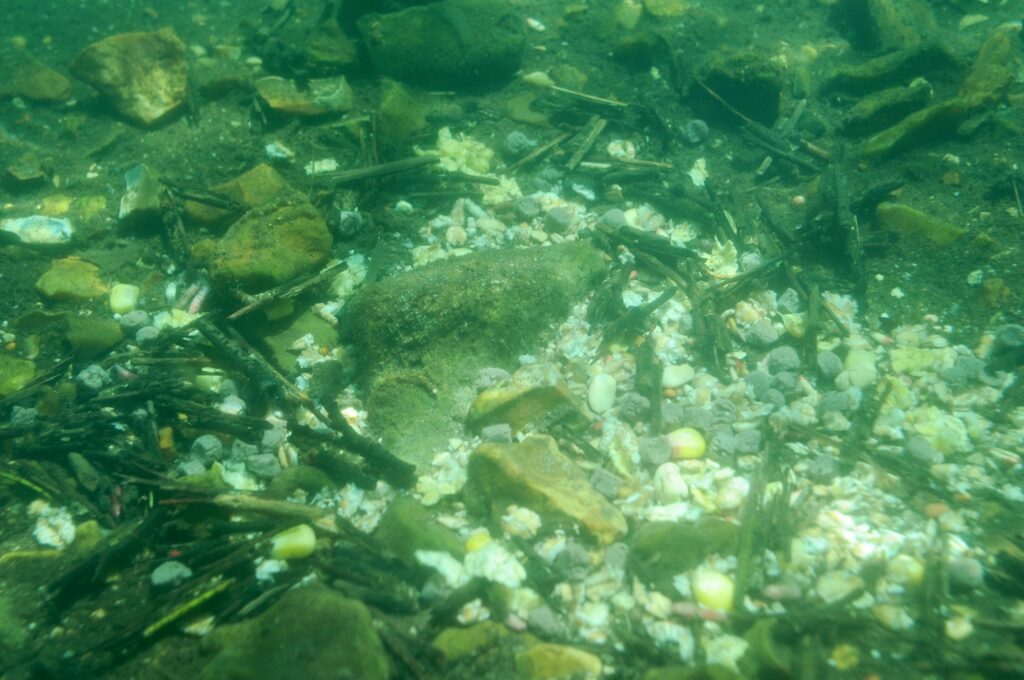

Which in turn pull down the tench
If you can manage a window that allows you to fish for several days, you will find that a swim builds up, the more bait goes in and the more fish get used to visiting your swim. It is almost impossible to overfeed at this time of the year, in part because you also draw in endless invertebrates that feed on the left-over crumbs of your baiting banquet. These invertebrates in their turn attract even more hungry tench, so you are in effect creating your own micro world down there.
On big waters that have big swims and numbers of biggish tench, it can pay to work as a team of two to four mates. If you share the cost, you can buy more bait and build up tench activity quicker. You can share the Spombing too and save your shoulders a bit. Above all, you can share the fun! And that, after all is said and done, is the whole object of trying to catch these gloriously beautiful fish.
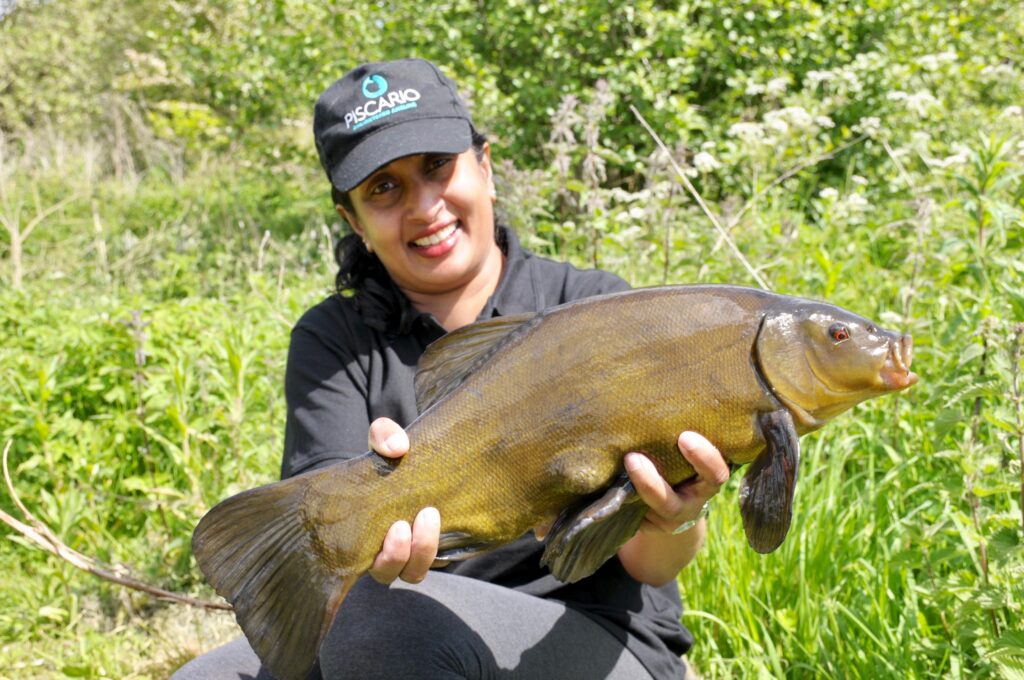

In this piece I have outlined how you can get the best out of any tench water I have come across, which is hundreds. However, I can completely understand if you simply want to venture out with a single float rod, a can of corn, enjoy the wonders of a May dawn, and keep your fingers crossed that a lovely tench will come your way. The choice is entirely yours.










